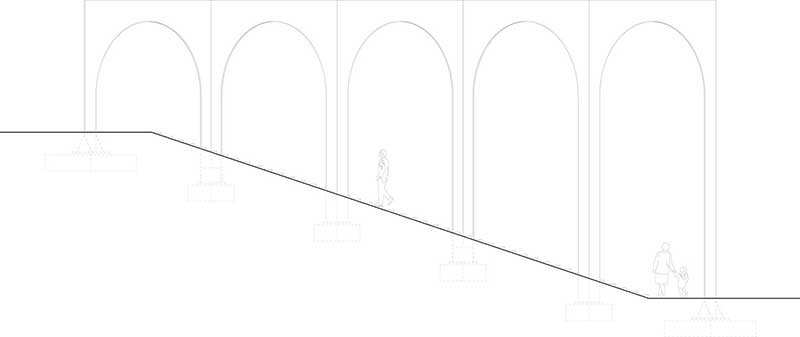▼Overview
In the polders of Kruibeke, just a stone’s throw from Antwerp, Gijs Van Vaerenbergh has created a new permanent artwork in the open space. The Arcade is a zigzag-shaped gallery that consists of five steel plates with classic arch shapes cut out. The artwork is located where a new flood embankment abruptly cuts across the historic road that connects the village of Bazel to the polder. Through their spatial interpretation of the junction, artists Pieterjan Gijs and Arnout Van Vaerenbergh aim to restore the original historic connection. The Agency for Nature and Forest (ANB) initiated the art project. With Arcade, the ANB aims to offer visitors a new perspective of the vast nature reserve.
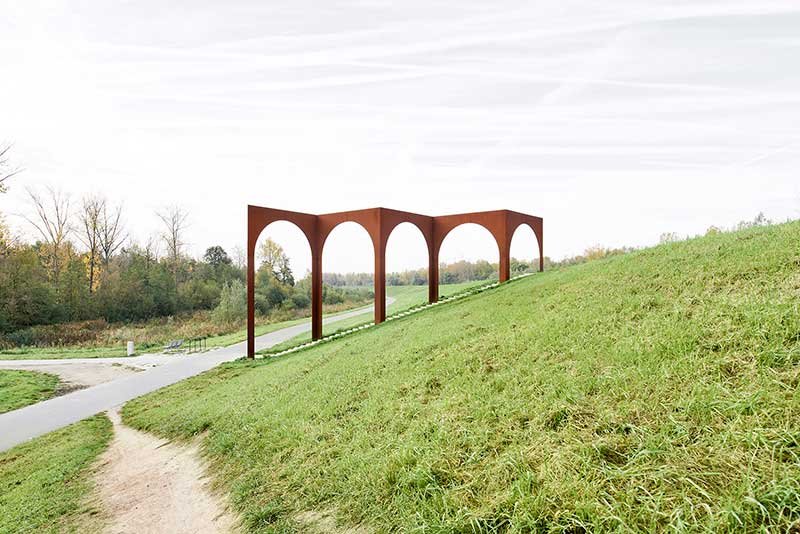
▼Arch Shapes Have Been Cut Out
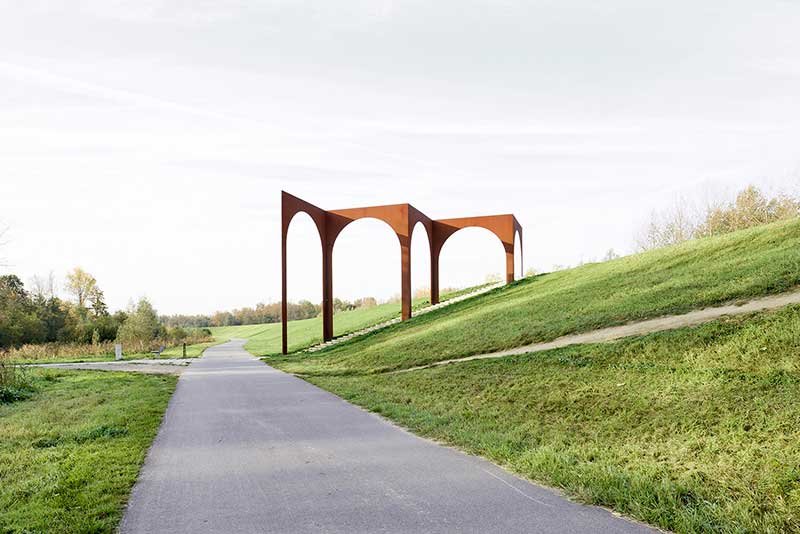
▼Arcade Is located In The Place Where The Original Road Turns Into The New Staircase
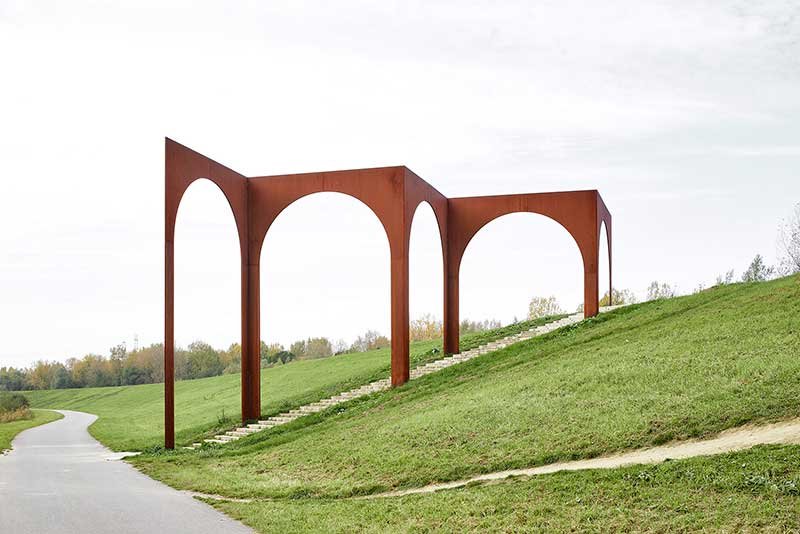
▼Arcade Consists Of Five Monumental Steel Plates
A new flood dike was constructed in Kruibeke a few years ago. This structure is part of the Kruibeke Bazel Rupelmonde Controlled Flood Area. While the dike protects against flooding and provides a panoramic view of the landscape, it also hinders an age old connection between the village and the polder. The dike cuts off nearby villages from the polder landscape, which currently holds the largest flooding area in Flanders. Gijs Van Vaerenbergh aims to depict this tense duality in their artistic creations. Arnout Van Vaerenbergh and Pieterjan Gijs state that “Arcade marks the historic connection between the village of Bazel and the polder. We visually and symbolically connect one side of the dyke to the other. The artwork is located exactly where the original road turns into the new staircase on the dike. Arcade consists of five massive steel plates arranged in a portico like structure. The top sides of the plates are all aligned at the same height, causing their legs to become longer as the dike descends, which increases the idea that the artwork is an existing artifact before the flood. The sculpture effectively touches upon the theme of memory.
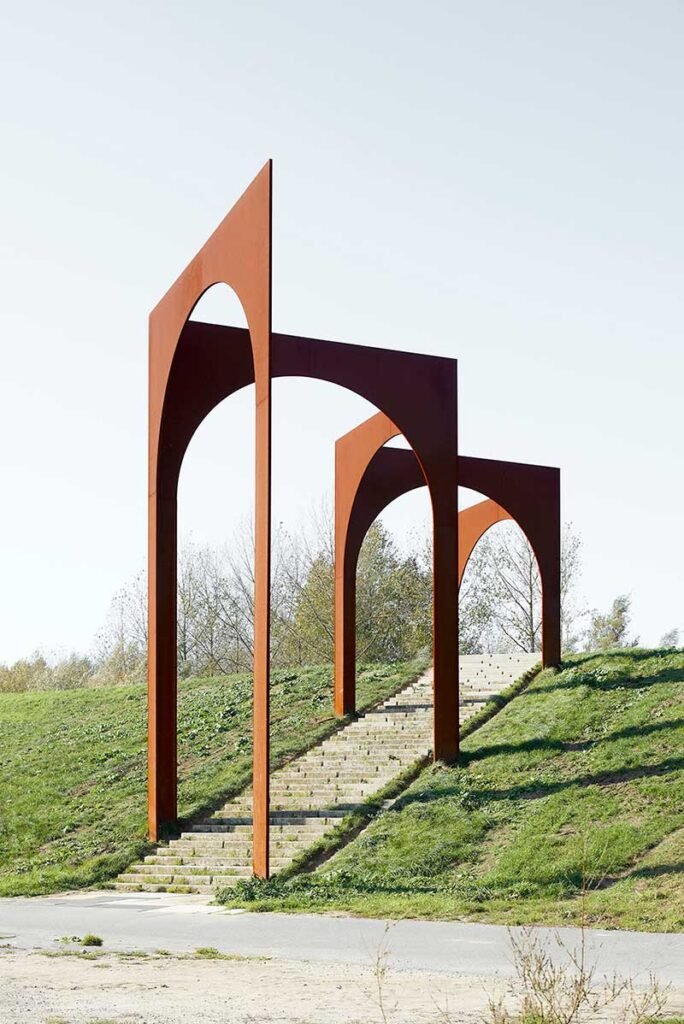
▼legs Becoming Longer As The Dike Descends
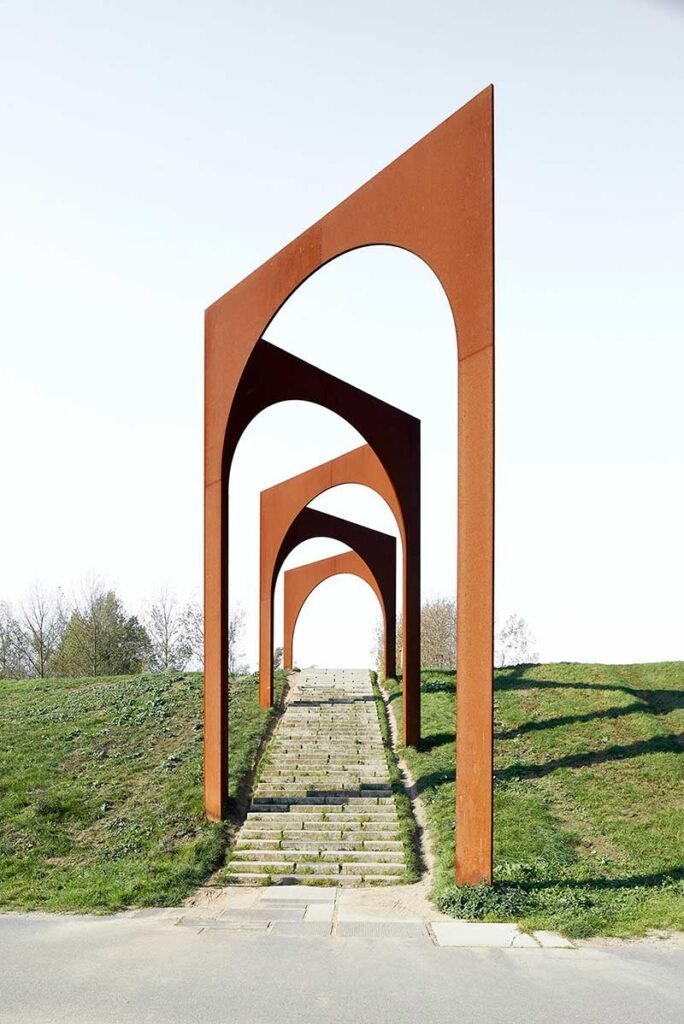
▼Arcade As A Series Of Windows
Arcade interacts with two directions the lateral and the diagonal that intersect at the symbolic location on the new flood dike. The work is experienced differently in different places,” says Pieterjan Gijs. Viewers in the longitudinal direction will perceive it as a series of windows into the surrounding environment. As the viewer approaches, the planes seem to arrange themselves into folds, creating a tangible sense of depth. Viewed from the transverse direction, however, the plates and their arches align perfectly behind each other, creating a sort of entrance hall over the stairway that restores the original connection between Bazel and the polder landscape.
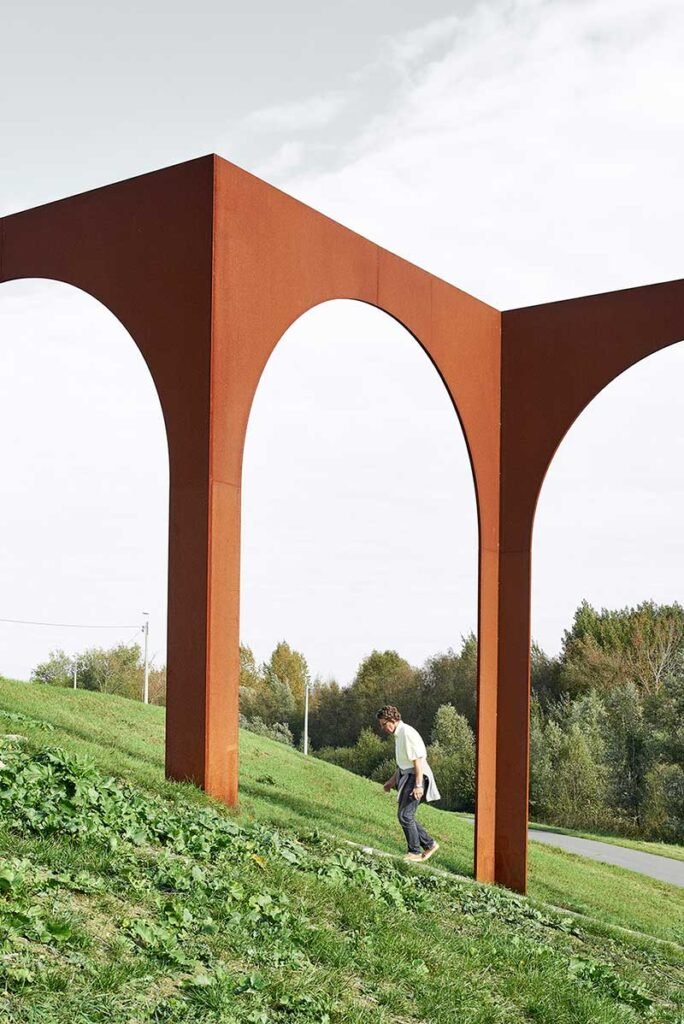
▼Folded Zigzag-Wise On The Ring Dike

▼A Sort Of Entrance Hall Experience

▼A Tangible Space Out Of A Flat 2D Figure
Arnout Van Vaerenbergh says, “Arcade refers to recognizable, traditional typologies such as the gallery, vault architecture, or the aqueduct. At the same time, the zigzag shape gives the work a sculptural feel. We created a 3D space using a flat 2D figure. The artwork was made of 4 cm thick steel plates. Gijs Van Vaerenbergh used weather-resistant corten steel, which has rusted skin that acts as a protective layer. The typical red-brown color of steel contrasts nicely with the green surroundings. The arcade weighs nearly 19 tons. The tallest arc reaches 10 meters; the total length is no less than 27 meters. The construction of the artwork involves joined together prefabricated steel elements. The five arch shapes were created in a local steel workshop and mounted on foundations and welded together on-site.

▼Red-Brown Colour Of The Steel Contrasts Nicely With The Green Environment
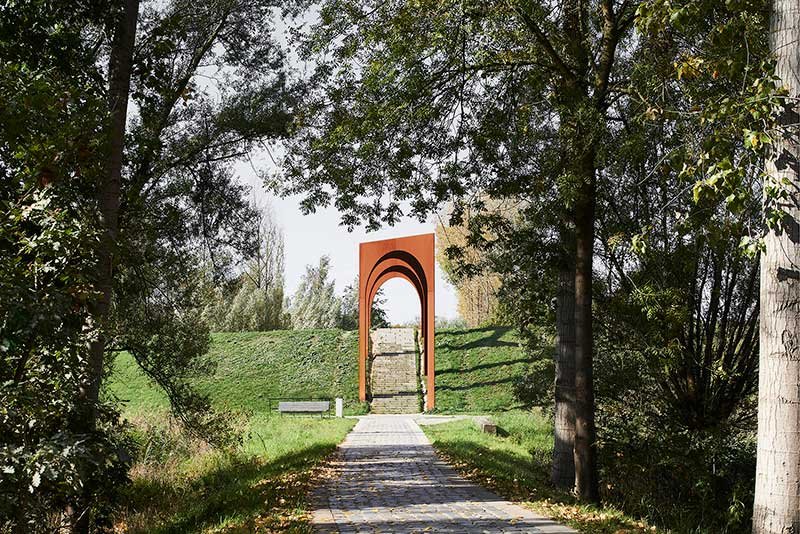
▼Axon
▼Front View
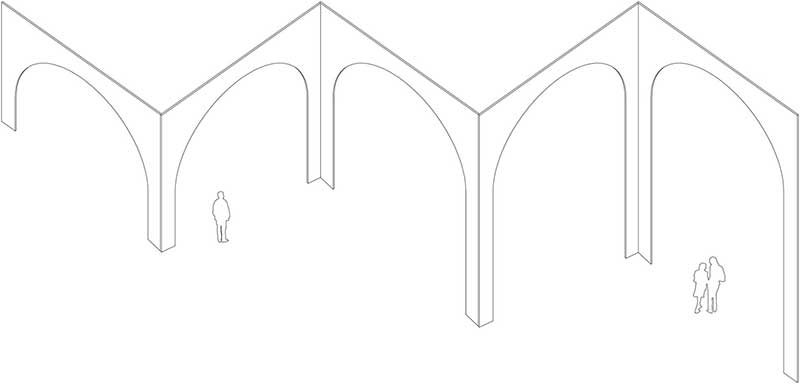

▼Side View
▼Plan

